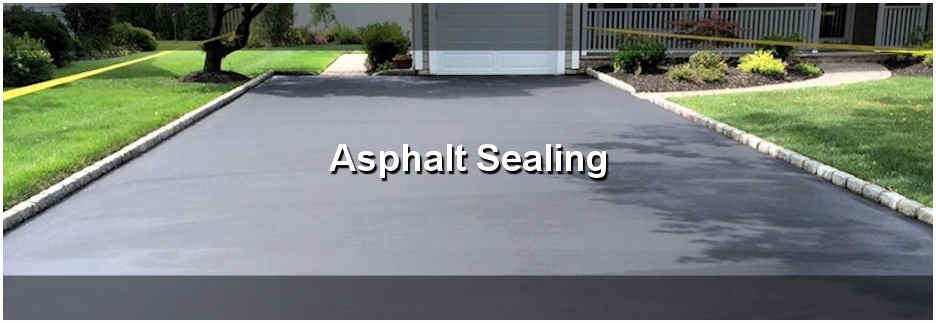Warm Mix Asphalt: A Sustainable Service for Sidewalk
Warm Mix Asphalt (HMA) has emerged as a leading sustainable option for pavement solutions, using a myriad of ingenious technologies and ecological benefits. Its capability to recycle products and lower power usage presents an engaging situation for its adoption in road building tasks. The lasting efficiency and sturdiness of HMA make it a recommended option for infrastructure advancement. As the demand for green construction practices grows, discovering the nuances of HMA's sustainability can provide useful insights right into the future of pavement options.
Environmental Advantages of Hot Mix Asphalt

Furthermore, Warm Mix Asphalt aids to alleviate city warmth island effects. Its dark color soaks up sunshine, reducing the amount of heat mirrored back into the ambience contrasted to lighter-colored pavements. This can decrease ambient temperatures in city locations, reducing the demand for air conditioning and eventually lowering power intake.
On top of that, Warm Mix Asphalt adds to improved stormwater administration. Its porous nature allows water to charge and penetrate the sidewalk groundwater supplies, lowering runoff and the danger of flooding. These ecological benefits make Hot Mix Asphalt a lasting option for leading roads and freeways.
Power Effectiveness in HMA Production
Is power efficiency a critical element in the manufacturing of Hot Mix Asphalt (HMA)? Power plays a considerable function in the production of HMA, influencing both cost and ecological sustainability. One crucial facet of power performance in HMA production is the use of warm mix asphalt (WMA) modern technologies.
Additionally, innovations in plant technologies have actually led to even more energy-efficient HMA manufacturing processes. By enhancing power use in HMA manufacturing, the industry can lower its carbon footprint while maintaining high-quality pavement materials.
Recyclability of Hot Mix Asphalt
The recyclability of Warm Mix Asphalt (HMA) is a pivotal aspect of its sustainability and long-lasting ecological effect. HMA is one of the most recycled materials in the United States, with over 100 million heaps of reclaimed asphalt pavement (RAP) being reused yearly in new pavement construction. Recycling HMA provides numerous environmental benefits, such as decreasing the requirement for virgin materials, decreasing power usage during manufacturing, and reducing the amount of waste sent out to land fills.
The procedure of recycling HMA includes milling the existing sidewalk, squashing it right into smaller sized items, and mixing it with new accumulation and asphalt binder to create a recycled mix. This recycled mix can frequently perform in addition to or perhaps far better than standard HMA, while calling for fewer basic materials and generating lower greenhouse gas exhausts. By incorporating RAP right into brand-new sidewalk jobs, roadway companies can conserve natural deposits, minimize expenses, and minimize the environmental impact of road building and construction and upkeep tasks. In general, the recyclability of HMA plays a considerable role in advertising sustainable techniques within the sidewalk sector.

Long-Term Efficiency of HMA
Asphalt sidewalks show durability and strength over an extended period, mirroring the long-term performance of Warm Mix Asphalt (HMA) The durability of HMA can be connected to its ability to hold up against heavy traffic loads, extreme weather, and the results of aging. Studies have actually shown that properly designed and correctly created HMA sidewalks can last for 20 years or more with normal maintenance. The secret to optimizing the lasting performance of HMA depends on utilizing top quality materials, following finest techniques in building and construction, and try this site executing effective upkeep techniques. Correct drainage, regular inspections, and prompt fixings are vital for preserving the architectural stability of HMA pavements with time. Additionally, advancements in HMA innovation, such as using polymer-modified binders and cozy mix asphalt, have further boosted the toughness and longevity of HMA sidewalks. By prioritizing high quality construction and upkeep methods, HMA proceeds to prove itself as a sustainable and affordable service for resilient pavement facilities.

HMA: Toughness and Sustainability
Showing both longevity and sustainability, Hot Mix Asphalt (HMA) has ended up being a cornerstone in the construction of resilient sidewalk infrastructures - angled parking. HMA's resilience stems from its capacity to endure heavy loads, severe weather, and high website traffic volumes, making it a reputable choice for highways, freeways, and airport runways. The structure of HMA, which commonly consists of accumulations, binder, and filler, plays an essential function in enhancing its longevity and resistance to wear and tear
Moreover, HMA's sustainability hinges on its recyclability and energy-efficient production procedure. The ability to reuse redeemed asphalt sidewalk (RAP) in new HMA combinations lowers the need for virgin products and decreases the ecological effect of pavement building and construction and upkeep. Additionally, the energy effectiveness of generating HMA depends on its reduced mixing temperatures contrasted to various other pavement materials, leading to minimized energy usage and greenhouse gas exhausts.
Conclusion
In verdict, warm mix asphalt (HMA) supplies a sustainable option for sidewalk with its eco pleasant features. HMA's recyclability, power efficiency in manufacturing, and long-lasting longevity make it an environmentally friendly choice for roadway construction.
HMA is one of the most recycled products in the United States, with over 100 million lots of reclaimed asphalt pavement (RAP) site being reused yearly in brand-new pavement building and construction.The procedure of reusing HMA entails crushing the existing sidewalk, crushing it into smaller sized pieces, and mixing it with new aggregate and asphalt binder to develop a recycled mix.Asphalt sidewalks show sturdiness and strength over an extended duration, showing the over here long-term performance of Hot Mix Asphalt (HMA) Furthermore, innovations in HMA modern technology, such as the usage of polymer-modified binders and warm mix asphalt, have additionally enhanced the toughness and long life of HMA sidewalks. The capability to recycle recovered asphalt pavement (RAP) in brand-new HMA mixtures lowers the demand for virgin products and minimizes the ecological impact of pavement building and construction and maintenance.